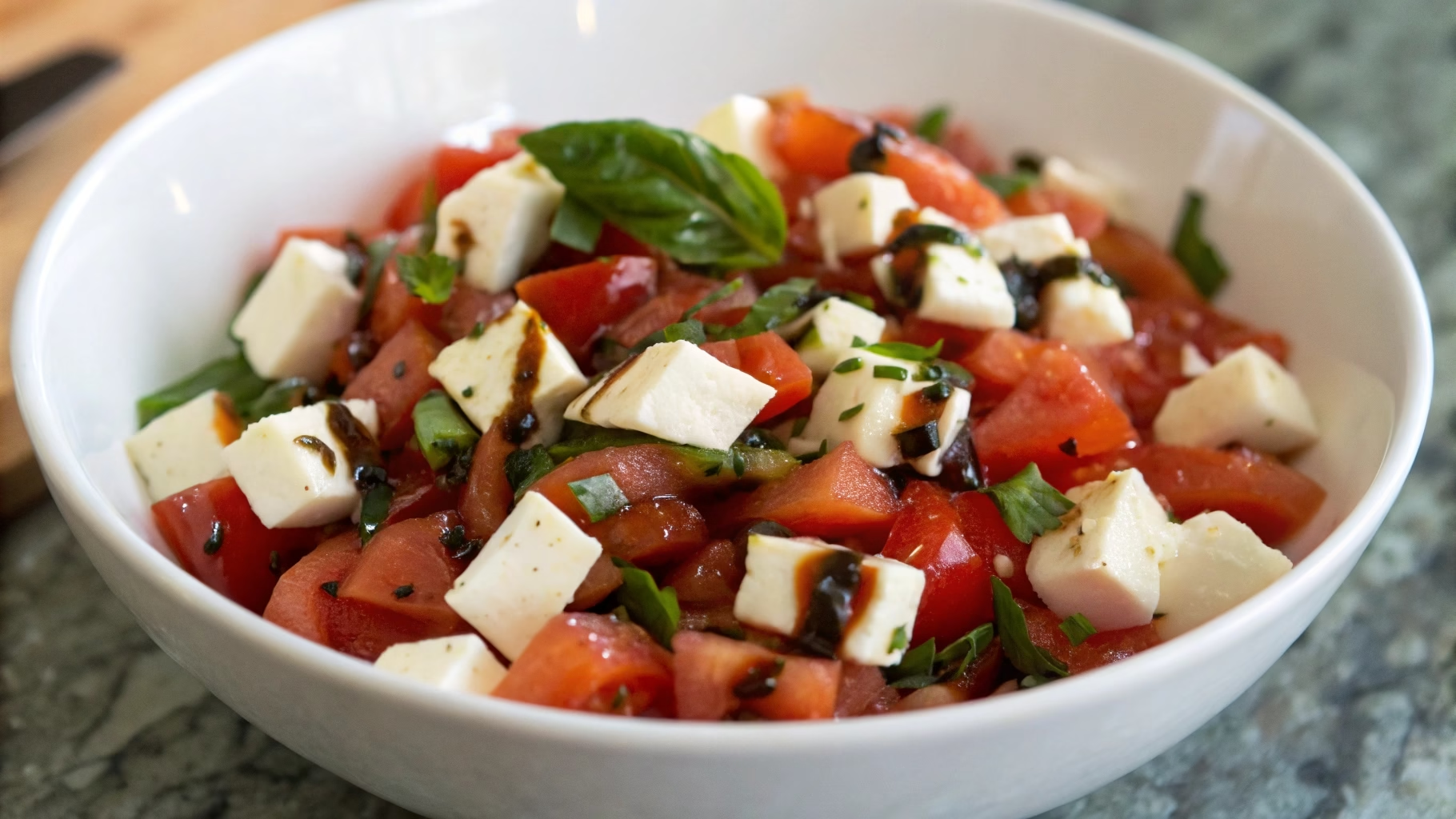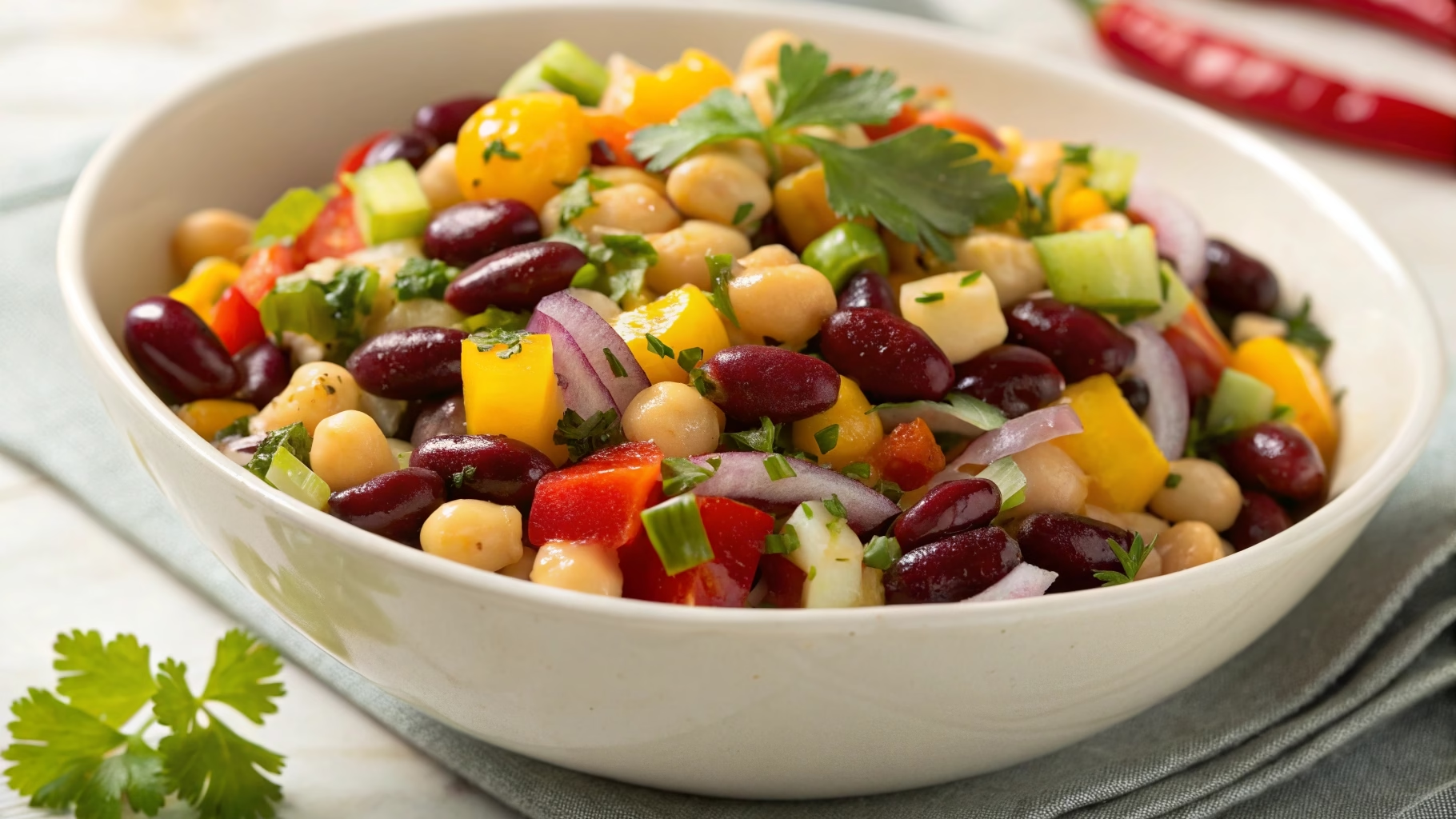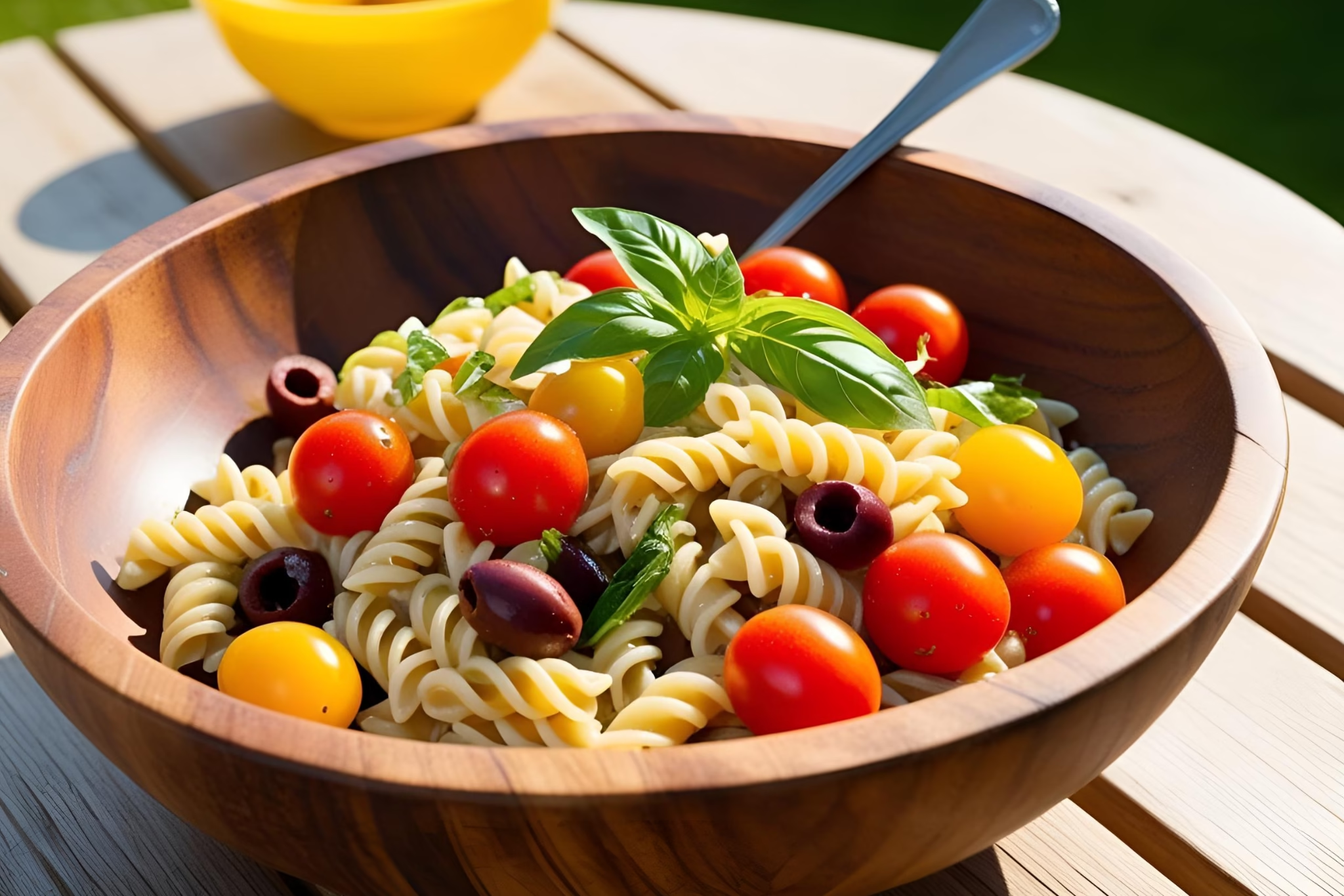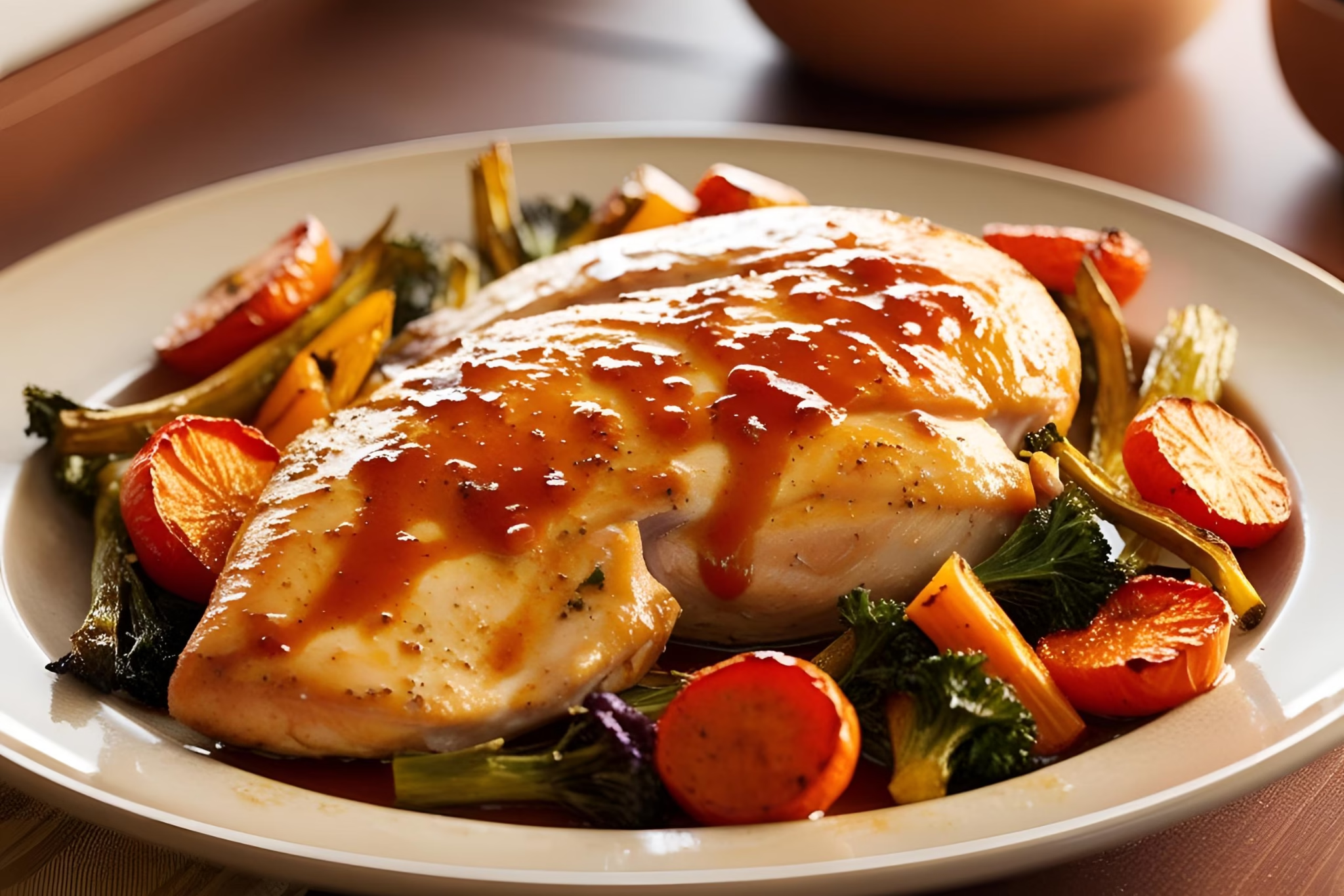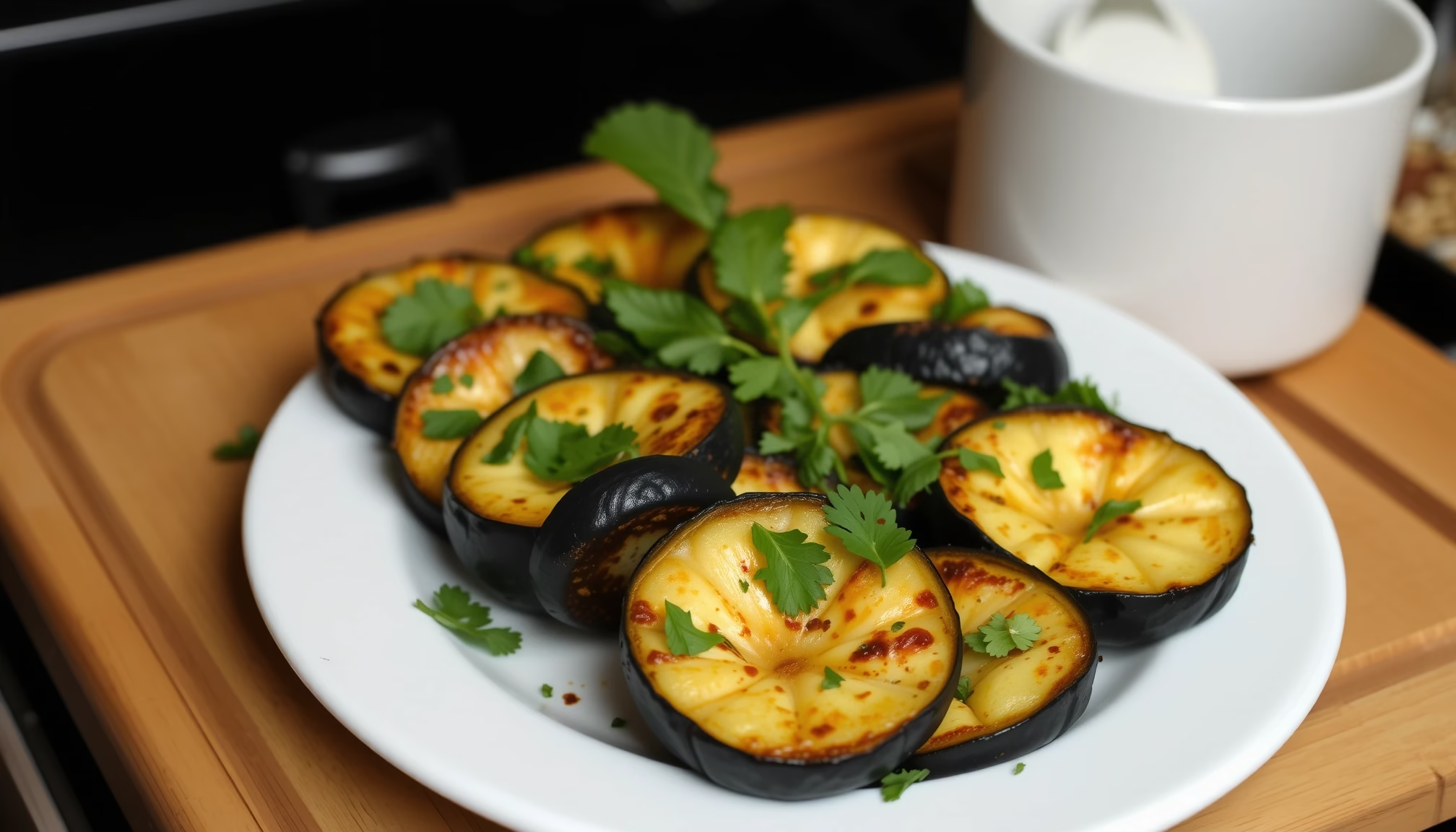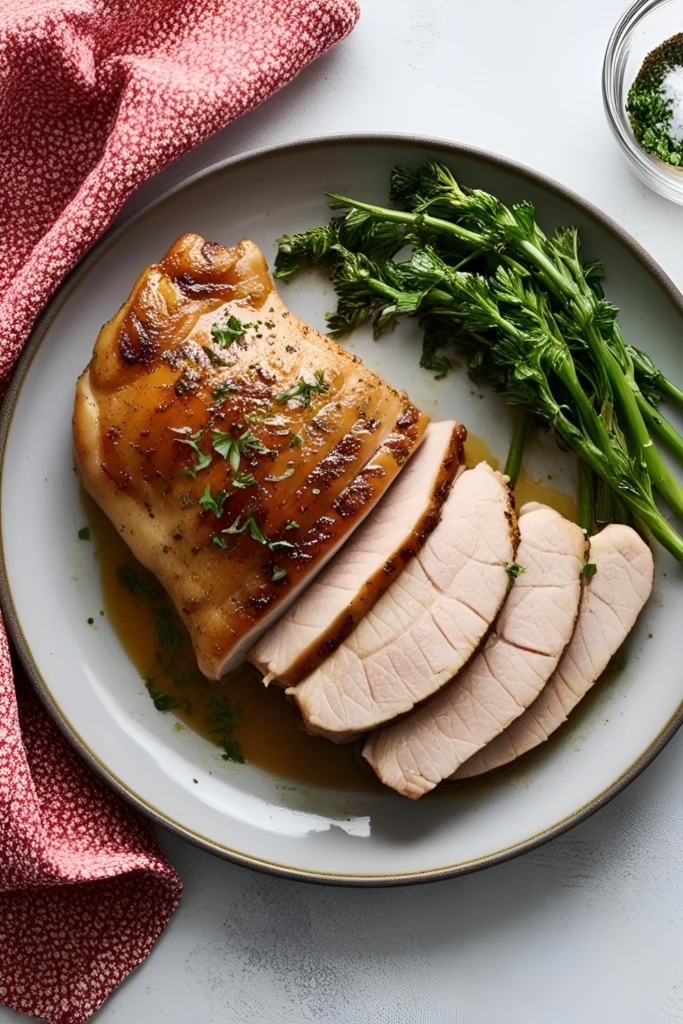Authentic Greek Salad (Horiatiki): A Refreshing Taste of the Mediterranean
There’s something incredibly special about a true Greek salad, or “Horiatiki Salata” as it’s known in Greece. Forget the limp lettuce and overly complicated versions you might have encountered elsewhere. The authentic Horiatiki is a celebration of rustic simplicity, showcasing the vibrant flavors of sun-ripened vegetables, salty feta, and glorious Greek olive oil. It’s sunshine in a bowl, a taste of Greek village life, and remarkably easy to recreate in your own kitchen. Let’s make one!
What Makes a Greek Salad “Horiatiki”?
“Horiatiki” translates to “village” or “country” salad. This tells you everything about its soul – it’s unfussy, made with readily available, fresh ingredients, and relies on their quality rather than complicated techniques. The key components are:
- Ripe tomatoes
- Crisp cucumber
- Sharp red onion
- Flavorful Kalamata olives
- A generous slab of creamy feta cheese
- Good quality extra virgin olive oil
- A sprinkle of aromatic dried oregano
Notably, a traditional Horiatiki never contains lettuce or any other leafy greens. The beauty lies in the chunky, substantial bite of the vegetables themselves.
Why You’ll Adore This Recipe
- Peak Freshness: It’s bursting with the flavors of summer produce.
- Incredibly Simple: Minimal chopping, no cooking – perfect for a quick lunch or side.
- Healthy & Wholesome: Packed with nutrients and good fats.
- Versatile: A fantastic side dish for grilled meats or fish, or a satisfying light meal on its own with some crusty bread.
Ingredients You’ll Need (Serves 4 as a side, 2 as a light main)
-
Tomatoes: 2-3 large, ripe, and flavorful tomatoes (about 1 lb / 450g). Vine-ripened, beefsteak, or heirloom varieties work beautifully.
Tip: Look for tomatoes that are heavy for their size and fragrant. Room temperature tomatoes have the best flavor!
-
Cucumber: 1 medium cucumber (Kirby or English cucumbers are great).
Tip: If using a waxy-skinned cucumber, you might want to peel it fully. For thinner-skinned varieties, you can partially peel it in stripes for a nice look, or leave the skin on if it’s tender.
-
Red Onion: ½ medium red onion.
Tip: If you find raw red onion too pungent, slice it thinly and then soak it in a bowl of ice-cold water for 10-15 minutes. Drain well before using. This mellows its bite considerably.
- Kalamata Olives: ½ cup (about 75-100g) good quality Kalamata olives, preferably with pits (they often have more flavor, but pitted is fine for convenience).
-
Feta Cheese: One 4-6 oz (115-170g) block of good quality Greek feta cheese, preferably made from sheep’s milk or a sheep/goat milk blend, packed in brine.
Tip: Avoid pre-crumbled feta; it’s often drier and lacks the creamy texture of block feta. The brine keeps it moist and flavorful.
- Green Bell Pepper (Optional): ½ medium green bell pepper. Some regions include it, others don’t. If you like them, add them!
- Extra Virgin Olive Oil: ¼ to ⅓ cup (60-80ml) high-quality extra virgin olive oil. Use the good stuff – its flavor is prominent here!
- Red Wine Vinegar: 1-2 tablespoons, or to taste.
-
Dried Greek Oregano: 1-2 teaspoons, or to taste.
Tip: Greek oregano has a specific, robust flavor that’s perfect for this salad. Rub it between your fingers when adding it to release its aromatic oils.
- Sea Salt Flakes & Freshly Ground Black Pepper: To taste. Be mindful that feta and olives are already salty.
Essential Equipment
- Sharp knife
- Cutting board
- Large salad bowl (a wide, shallow bowl works well)
Let’s Get Chopping: Step-by-Step Instructions
Prep Time: Approximately 15 minutes
- Prepare the Tomatoes: Wash the tomatoes thoroughly. Remove the cores. Cut them into large, irregular wedges or chunks. Don’t dice them too small; you want substantial pieces. Add them directly to your large salad bowl.
- Prepare the Cucumber: Wash the cucumber. Peel it fully, partially, or leave the skin on, according to your preference and the cucumber type (see tip above). Slice it into thick half-moons or chunks (about ½ inch / 1-1.5 cm thick). Add to the bowl with the tomatoes.
- Prepare the Red Onion: Peel the red onion and slice it thinly into half-moons or rings. If you’re soaking it (see tip above), do this now while you prep other ingredients, then drain well. Add the onion to the bowl.
- Prepare the (Optional) Bell Pepper: If using, wash the green bell pepper, remove the stem, seeds, and white pith. Slice it into thin strips or rings. Add to the bowl.
- Add the Olives: Add the Kalamata olives to the vegetable mixture.
- Initial Seasoning (Gentle!): Sprinkle a small pinch of sea salt and a few grinds of black pepper over the vegetables in the bowl. Toss very gently to distribute. Remember, the feta and olives will add more saltiness later.
- Dress the Salad: Drizzle the extra virgin olive oil generously over the vegetables. Follow with the red wine vinegar. Start with a smaller amount of vinegar; you can always add more if needed. Gently toss everything together a couple of times to coat the vegetables.
- The Feta Finale: Now for the star! Take your block of feta cheese. The most traditional way is to place the entire slab right on top of the salad. Alternatively, you can break it into large, rustic chunks with your hands and scatter them over the top. Avoid crumbling it too finely.
- Oregano Power: Sprinkle the dried Greek oregano generously over the feta and the rest of the salad. For an extra burst of aroma, rub the oregano between your palms as you sprinkle it.
- Serve and Enjoy: Your Horiatiki is ready! It’s best served immediately. However, letting it sit for about 10-15 minutes at room temperature allows the flavors to meld beautifully.
Top Tips for an Unforgettable Greek Salad
- Quality Over Quantity: This salad is a testament to the “less is more” philosophy. Use the best, freshest ingredients you can find. The flavor difference is remarkable.
- Don’t Over-Mix: You want the integrity of each ingredient to shine. A gentle toss is all that’s needed.
- Room Temperature is Best: For optimal flavor, especially from the tomatoes, try to assemble and serve the salad with ingredients at room temperature. If your veggies are chilled, let them sit out for a bit.
- The “Papara” Tradition: One of the great joys of eating Horiatiki is the “papara” – using crusty bread to soak up the delicious, oily, tomato-infused juices left at the bottom of the bowl. Don’t let that goodness go to waste!
- A Splash of Brine: For an extra tangy kick, you can add a teaspoon or two of the feta brine into the dressing.
- No Lettuce, Seriously! We’ve said it before, but it’s worth repeating: authentic Horiatiki does not contain lettuce. Adding it changes the texture and character of the salad entirely.
Common Variations (Keeping it Authentic-ish)
While the core recipe is classic, you might encounter:
- Capers: A few pickled capers can add a briny punch.
- Purslane (Glistrida): In some parts of Greece, especially in summer, wild purslane leaves are sometimes added. They have a slightly lemony, succulent quality.
Serving Your Horiatiki
Greek salad is wonderfully versatile:
- Perfect Side Dish: Serve alongside grilled chicken souvlaki, lamb chops, roasted fish, or moussaka.
- Light Lunch: Enjoy a generous portion with a side of crusty bread (for that papara!).
- Mezze Platter Star: A fantastic addition to any Greek mezze spread with tzatziki, hummus, and pita bread.
Storing Leftovers
Greek salad is undeniably best when freshly made. If you do have leftovers:
- Store them in an airtight container in the refrigerator for up to 24 hours.
- Be aware that the vegetables, especially the tomatoes and cucumbers, will soften and release more liquid over time. The salad will still be tasty, just with a slightly different texture.
- If making ahead for a party, you can chop the vegetables and store them separately from the dressing and feta. Combine just before serving for the freshest result.
Savor Every Rustic Bite!
There you have it – a simple, authentic Greek salad that will transport your taste buds straight to a sunny taverna by the Aegean Sea. Enjoy the fresh flavors, the beautiful colors, and the wholesome goodness of this Mediterranean classic. Kali Orexi! (Good Appetite!)

